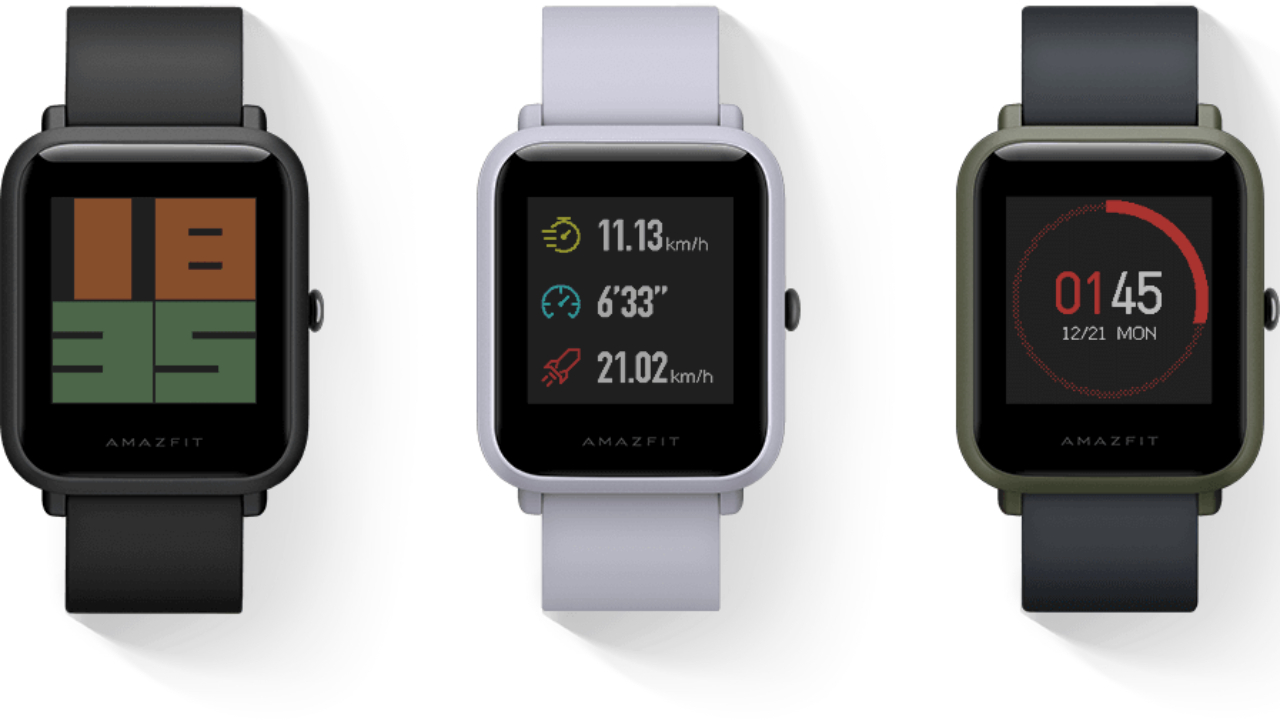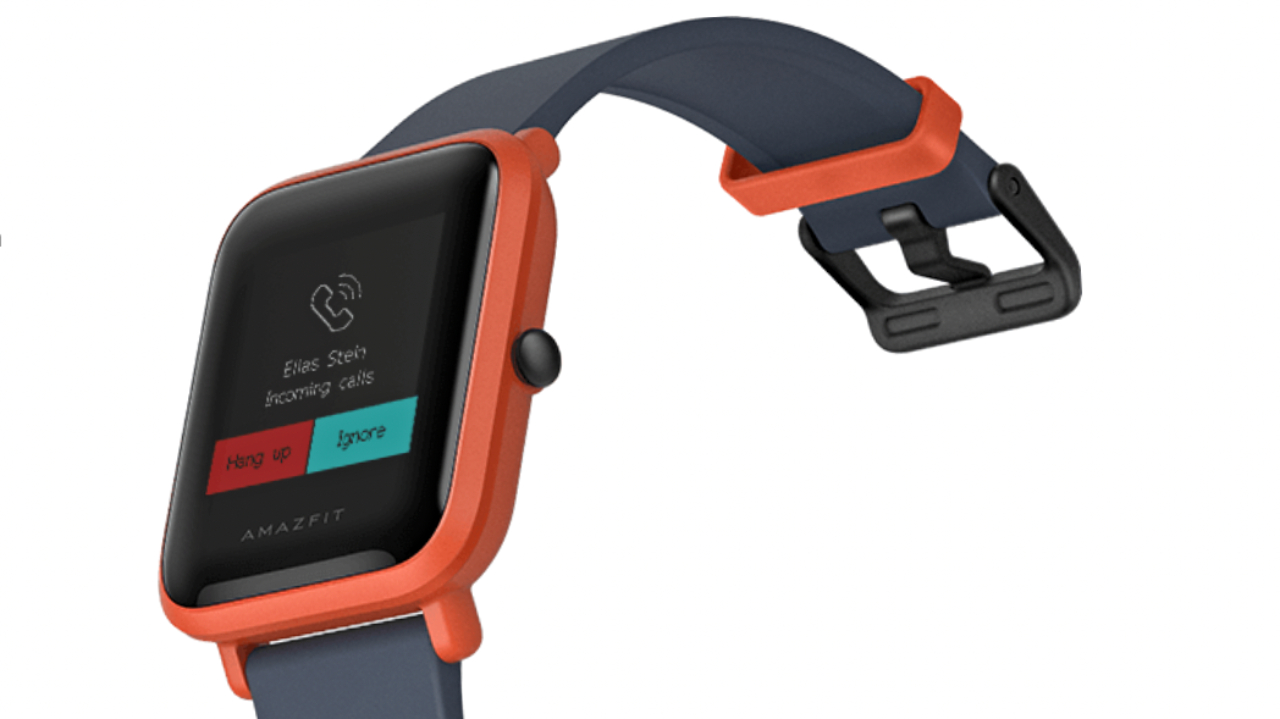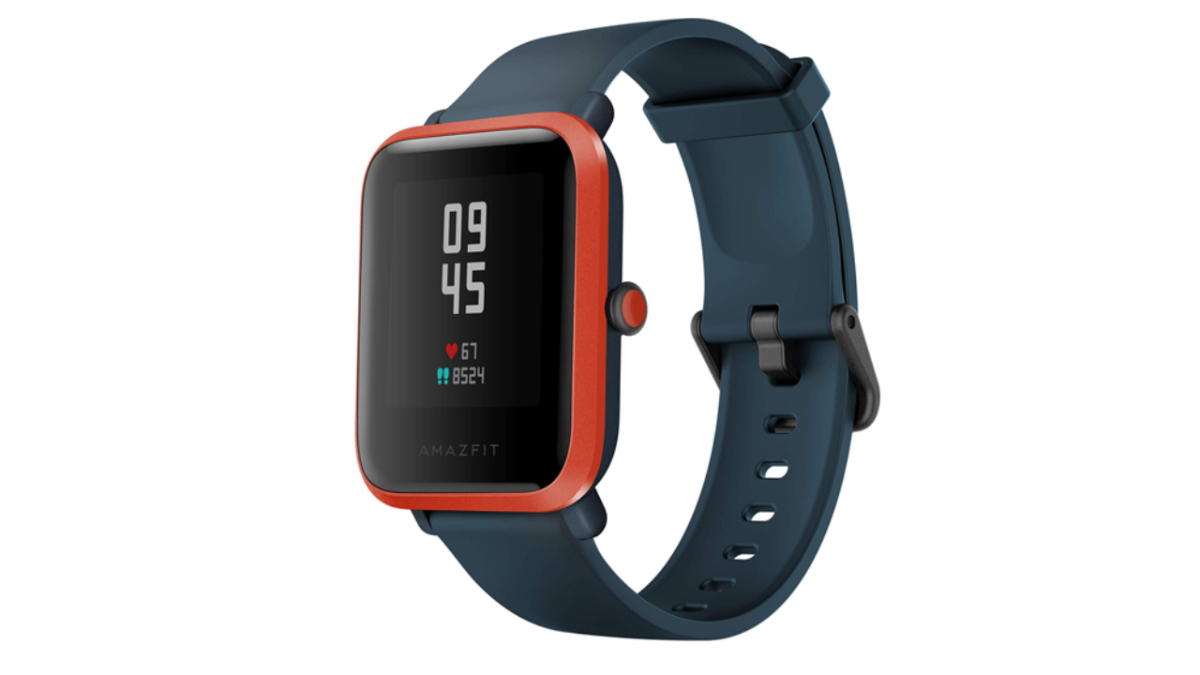Our Verdict
It only costs £90 (sometimes less) and the battery lasts a month. Those are the headlines when it comes to the Amazfit Bip, which is a GPS tracker with a built-in heart rate monitor and relays smartphone notifications. The catch is that the Bip isn’t always accurate, especially in heart rate monitoring, but if you can accept its limitations it’s undoubtedly a bargain.
For
- Price
- Battery life
- Slim, lightweight and comfortable to wear for long periods.
- Better-than-average sleep tracking
Against
- Only sports modes for running, walking and cycling
- Accuracy of heart rate tracking
- Elevation tracking during runs was inaccurate
- Syncing to Mi Fit app can be hit and miss
You can trust Coach
The Amazfit Bip In-Depth
Using The Amazfit Bip For Running
The first test of any GPS device that's looking to be among the best fitness trackers is how long it takes to lock on to GPS when you start a run – the Bip failed at the first hurdle. Compared with a couple of other, admittedly far more expensive, trackers, it was consistently slower in finding GPS at the start of a run. I’d say you can expect 45-75 seconds of standing around – not a nightmare by any means, but the temptation to skip the process and just track the run with the Bip’s accelerometer can be hard to resist.
Once you’re up and running the Bip displays your distance, time, pace and heart rate on the main screen, and you can also find other stats like your average pace, elevation climbed and stride length by scrolling up and down. There are also auto-lap alerts giving the basic stats for each kilometre or mile you run.
The heart rate info is colour-coded on the main running screen, which makes it easier to take in at a glance. Unfortunately I found that the info was generally wrong, with the Bip underestimating my heart rate (compared with another wrist tracker and a chest strap) by about 20 to 30bpm when running.
After the run the info is sent to the Mi Fit app where you get a map of your run, which is colour-coded to show your pace at each point, plus graphs of pace, elevation and heart rate. As with heart rate, the elevation stats were plain wrong, with the Bip overestimating the metres climbed on every run I used it for. Not by a small amount, either – on one run the Bip suggested I’d climbed 150m when I’d done 80m.
The distance tracking was more accurate, though again a little generous compared with my other trackers. It was close enough to be useful, which is important because the distance tracking feeds into the pace stats too.
You can also track treadmill runs with the Bip, in which mode calories are promoted to the main in-run display screen at the expense of pace. As with pretty much all wrist trackers the accuracy of indoor distance tracking is poor – the stats on the treadmill are the ones to go by.
The Bip works well enough as a basic running tracker. There are no intervals modes to use, which would be a welcome addition, but all the most useful stats are there on your wrist and in the post-run activity summary on the app. Unfortunately it is undermined by poor accuracy.
Using The Amazfit Bip For Cycling
As above, so below. The Bip has indoor and outdoor cycling modes, and the display gives all the key stats – distance, time, speed and average speed – along with heart rate. I found that the heart rate tracking was slightly less inaccurate when cycling than it was when running, but that could have been down to the fact I was running at a higher intensity than I was cycling.

Using The Amazfit Bip To Track Activity
The Bip will track your steps and calories burned throughout the day, both of which can be displayed on the home screen if you select certain watch faces. It will also buzz at you if you’re stationary for too long, and it has a splendid “Get Up And Move” animation where a stick figure gets out of its chair and goes for a little walk. I liked this charmingly lo-fi stick figure a lot. You can adjust your step target if the default 10,000 is too high or low for you, and also turn off the move alerts if you find them annoying.
You can see your daily stats in the Status section of the Bip’s menu, which also shows the total distance you’ve covered and your average heart rate for the day. In the partner Mi Fit app you are also shown activities that the Bip has tracked automatically, but these are sometimes bizarrely inaccurate – one lunchtime I was given credit for 707 steps when I had been sitting down eating a sandwich.
Using The Amazfit Bip As A Heart Rate Monitor
In the running and cycling sections I lambasted the Bip’s accuracy in heart rate tracking during activities, but how does it get on throughout the rest of the day? Better, as you’d expect – it’s easier to get an accurate heart rate reading from the wrist when you’re sitting down or sleeping, rather than playing sport. You can set the frequency of how often you want the Bip to take a heart rate reading to one, ten or 30 minutes, and given the excellent battery life you might as well plump for the most frequent – the worst-case scenario is that it might suck enough juice to make you have to charge the Bip twice a month rather than once.
In the Mi Fit app you can see a breakdown of the time you’ve spent in each heart rate zone throughout the day. Unfortunately this is skewed by the inaccurate tracking during activities. There is also an estimate of your resting heart rate in the app. This is a good measure of your cardiovascular fitness and, because it’s taken when resting, the Bip’s measurement was in line with other trackers – but make sure the device is taking readings every minute if you want the most accurate info.

Using The Amazfit Bip For Sleep Tracking
The Bip’s slim and lightweight design means it’s comfortable enough to wear while sleeping, though it’s best to loosen the strap because the skin underneath will get hot otherwise. Although it tended to overestimate the total time asleep, I was impressed by how the Bip presented the data. You are given a breakdown of time spent in deep and light sleep, along with time awake, and you are also compared with other people of your age and sex in terms of how early you feel asleep and how much time you spent in deep sleep. You’re also given a points score for your sleep, which helps you compare one night’s rest with another’s quickly.
The Mi Fit App
The homepage of the Mi Fit app shows basic stats from your latest activity and night’s sleep, along with a graph of your heart rate for the day and your weight (if you add it manually). There is also a Streak section, which shows how many days in a row you’ve hit your steps target. It could be a bit more informative, with your daily steps and calories shown, but that info is easily accessed on the Bip itself.
I found that syncing with the Mi Fit app wasn’t always the smoothest experience. Sometimes it would take mere seconds, and then at other times it would be impossible to connect the Bip to my phone unless I reset one or both of them. It happens with all trackers occasionally, but it happened more frequently – several times a week – with the Bip, especially after activities.
How Often Am I Going To Have To Charge It?
The Bip’s battery life really is a marvel, especially because it is such a small tracker and has an always-on screen. Amazfit quotes the life span as 45 days in watch mode and 22 hours of GPS, and with regular use it will last most people 30 days comfortably. I found that even if you run and/or cycle most days and have the heart rate tracking set to take readings every minute, the Bip will still have enough juice to make it through two weeks.
Charging the Bip takes two to three hours (about twice the time of other trackers), which is the natural downside of such a big battery, but it’s no real hardship when you only have to plug it in every few weeks.
Where Can I Wear It Without People Laughing At Me?
It’s fair to say the Bip closely resembles the aesthetic of the Apple Watch, though it trades out the metal for plastic. The result is an inconspicuous watch that you can wear anywhere – it’s not especially good-looking, but it’s not an eyesore either.
Should I Consider Buying Something Else?
The Amazfit Bip is pretty much in a bracket of its own, offering a full GPS watch experience for comfortably under £100. The Huawei Band 2 Pro tracker band also has GPS and a heart rate tracker and is even cheaper at £50, but doesn’t have the large screen of the Bip, or its mammoth battery life. If you can get the Bip for under £70, it outguns everything else around it. At £90, however, it does get closer to the price of more accurate and impressive trackers like the Fitbit Charge 2, Garmin Forerunner 30 and TomTom Spark 3, which are usually available for £100 or so – although even there you won’t find a battery life as good as the Bip’s.

Nick Harris-Fry is a journalist who has been covering health and fitness since 2015. Nick is an avid runner, covering 70-110km a week, which gives him ample opportunity to test a wide range of running shoes and running gear. He is also the chief tester for fitness trackers and running watches, treadmills and exercise bikes, and workout headphones.

